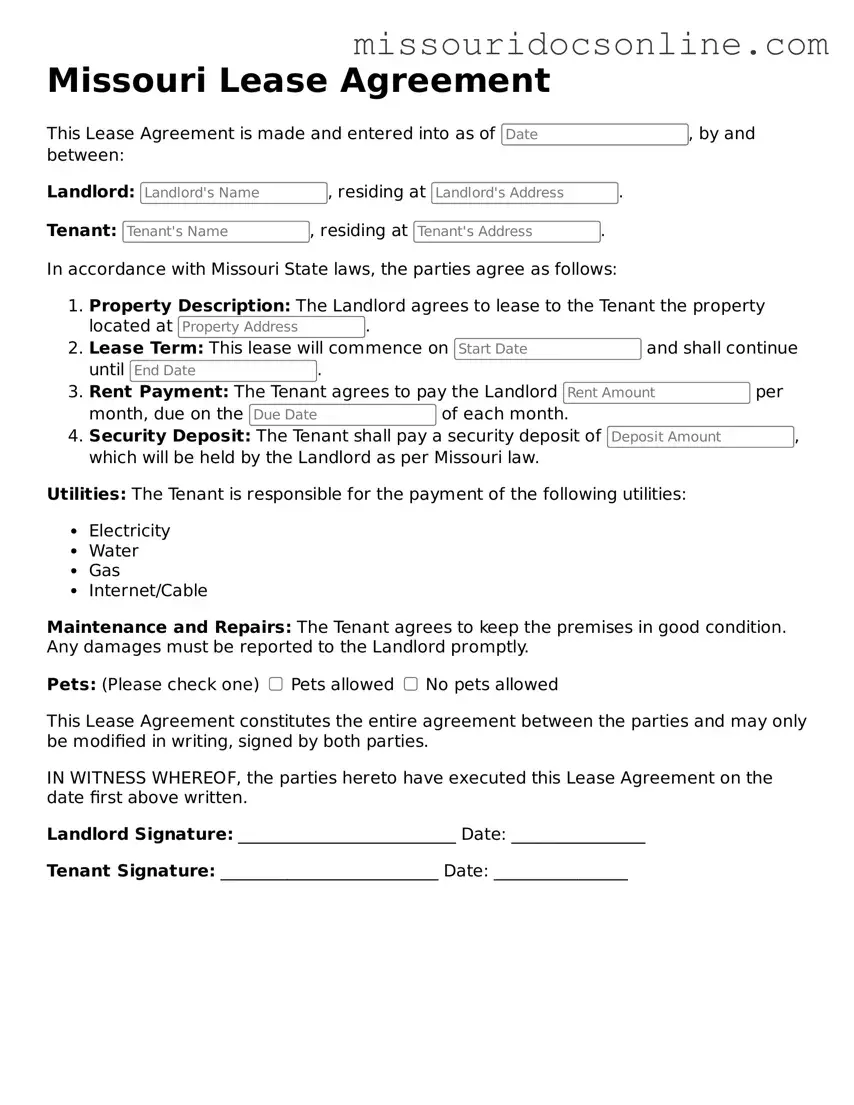Attorney-Approved Lease Agreement Form for Missouri State
A Missouri Lease Agreement form is a legal document that outlines the terms and conditions between a landlord and a tenant for renting a property. This form serves to protect the rights of both parties while providing clarity on responsibilities, payment schedules, and other important details. If you’re ready to secure your rental arrangement, consider filling out the form by clicking the button below.
Access Lease Agreement Editor
